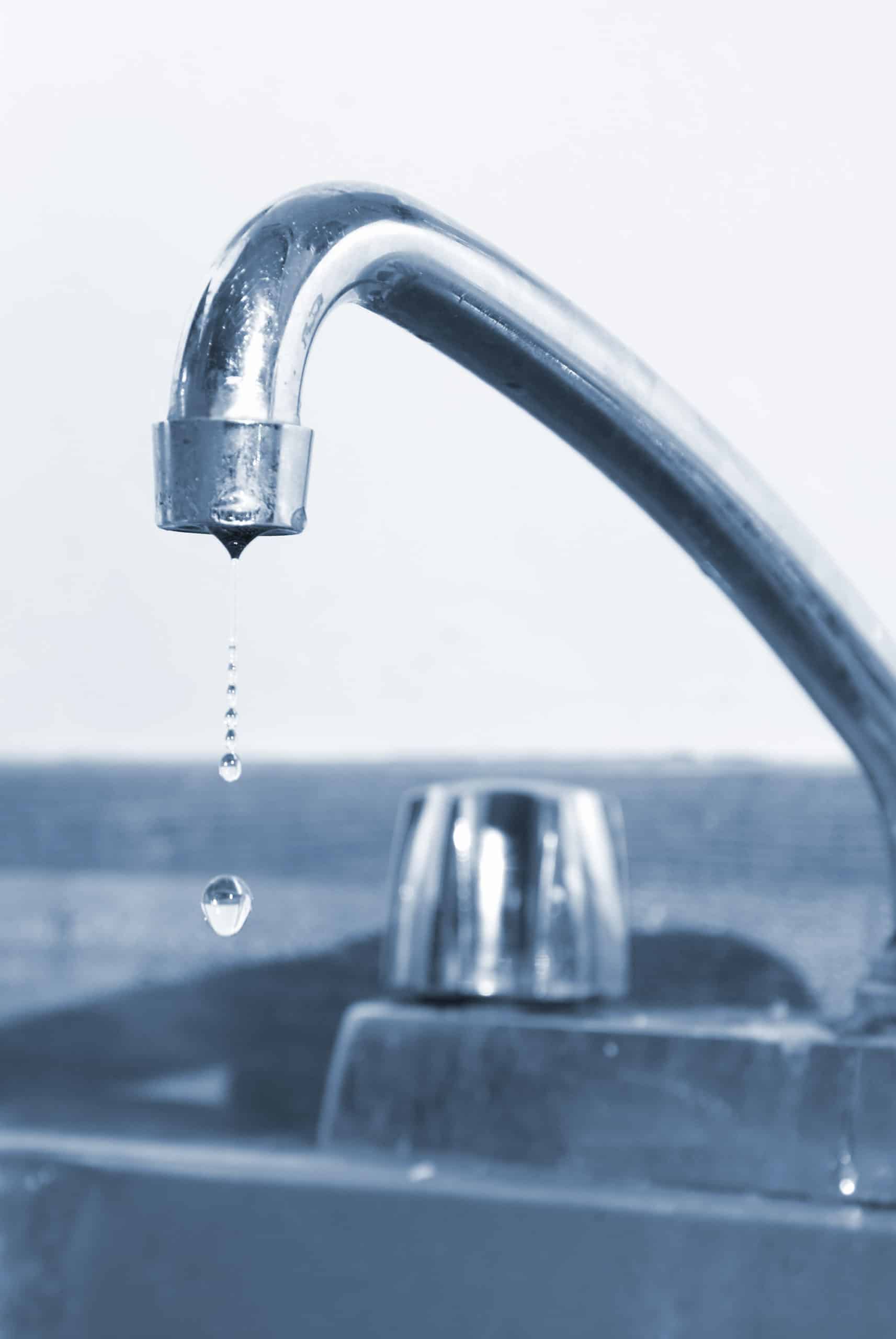We have stumbled on the article involving 4 Common Reasons for a Leaky Faucet listed below on the net and thought it made good sense to write about it with you in this article.

Trickling faucets might look like a minor inconvenience, yet their effect exceeds just the annoyance of the audio. From wasting water to incurring unneeded financial costs and health and wellness risks, overlooking a leaking faucet can bring about numerous repercussions. In this article, we'll delve into why it's important to address this typical family issue immediately and effectively.
Wastage of Water
Environmental Influence
Dripping faucets add substantially to water wastefulness. According to the Environmental Protection Agency (EPA), a single tap dripping at one drip per secondly can lose more than 3,000 gallons of water each year. This not just pressures water sources yet likewise impacts communities and wildlife dependent on them.
Financial Prices
Raised Water Costs
Beyond the ecological influence, trickling faucets can blow up water costs considerably. The accumulated waste with time translates into greater energy expenses, which could have been prevented with prompt fixings.
Potential Home Damage
Moreover, prolonged dripping can result in harm to components and surfaces surrounding the faucet. Water build-up can create discoloration, rust, and even structural problems if left ignored, leading to extra repair work expenses.
Health and wellness Issues
Mold and Mildew Development
The constant existence of wetness from a leaking tap produces an ideal environment for mold and mildew development. These fungis not just jeopardize indoor air high quality however also pose health dangers, specifically for people with breathing problems or allergies.
Waterborne Diseases
Stationary water in leaking taps can become a breeding ground for microorganisms and other microorganisms, enhancing the threat of waterborne illness. Pollutants such as Legionella germs flourish in stagnant water, potentially resulting in significant ailments when consumed or inhaled.
DIY vs. Professional Repair
Advantages and disadvantages of DIY Repair Work
While some may attempt to repair a dripping tap themselves, DIY repairs include their own set of challenges. Without correct expertise and tools, DIY attempts can exacerbate the concern or cause incomplete repairs, lengthening the issue.
Advantages of Working With a Specialist Plumber
Hiring a professional plumber ensures that the underlying source of the trickling tap is attended to successfully. Plumbing professionals have the proficiency and equipment to diagnose and fix faucet issues successfully, saving time and minimizing the danger of additional damage.
Step-by-Step Guide to Dealing With a Dripping Faucet
Tools Called for
Prior to attempting to repair a dripping tap, collect the required devices, consisting of a flexible wrench, screwdrivers, substitute components (such as washing machines or cartridges), and plumber's tape.
Usual Tap Issues and Their Solutions
Recognize the sort of tap and the particular issue triggering the drip. Usual problems consist of worn-out washing machines, rusty shutoff seats, or faulty O-rings. Refer to maker directions or on-line tutorials for step-by-step support on repair services.
Preventive Measures
Regular Upkeep Tips
To prevent trickling taps, execute routine maintenance such as cleaning aerators, checking for leaks, and changing damaged parts immediately. Additionally, take into consideration installing water-saving tools or upgrading to more effective fixtures.
Value of Prompt Repair Works
Addressing trickling faucets as soon as they're observed protects against additional water wastage and potential damage, ultimately conserving both water and cash in the future.
Influence On Home Value
Understanding of Well-Maintained Home
Preserving a residential property in good condition, including addressing maintenance issues like dripping taps, enhances its perceived worth and worth among potential customers or renters.
Influence on Resale Worth
Residences with well-kept plumbing components, consisting of faucets, command greater resale values in the realty market. Resolving leaking taps can contribute to a positive impact during home inspections and arrangements.
Ecological Obligation
Specific Payment to Preservation
Taking obligation for repairing trickling faucets lines up with more comprehensive initiatives towards water conservation and environmental sustainability. Every person's actions jointly make a substantial influence on maintaining valuable sources.
Lasting Living Practices
By prioritizing timely fixings and adopting water-saving habits, individuals add to lasting living methods that profit both existing and future generations.
Conclusion
Addressing a leaking tap surpasses plain convenience; it's a vital action towards conserving water, decreasing monetary costs, and securing health and property. Whether via do it yourself repair work or expert aid, acting to take care of dripping faucets is a little yet impactful method to promote accountable stewardship of sources and add to a much healthier, extra sustainable future.
How to Fix a Dripping or Leaky Faucet
A leaking faucet is one of the most common problems that homeowners encounter, but it being commonplace doesn’t make it any less annoying. The constant drip drip drip of a leaking bathtub faucet, showerhead, or sink tap can disturb your home’s serenity. Left neglected, a dripping faucet can also result in higher water bills and discoloration or mold growth in your sink or plumbing fixtures.
Fortunately, you don’t have to be a trained plumber to know how to stop a dripping faucet. With some basic tools, replacement parts, and a little patience, leaky faucet repair is a breeze. In this article, we’ll explain what causes dripping faucets and how you can fix them.
What Causes a Leaking Faucet?
Kitchen and bathroom faucets come in all manner of designs, but most involve some combination of valves, O-rings, seals, and washers. The O-ring is usually the weakest link, but any one of these pieces can wear down over time. Heat, moisture, temperature fluctuations, minerals, mold, and movement can contribute to warping and corrosion, breaking the watertight seal. This just comes with the territory of being a homeowner. Everything is always subject to wear and tear, and some component parts of your appliances and fixtures need to be replaced on occasion. At least replacement O-rings are cheap!
More rarely, dripping faucets can be a symptom of excessively high water pressure. Were this the case in your home, you would probably notice that the leak is not isolated to one faucet. Water pressure issues are harder to resolve on your own. We recommend contacting a professional plumber if you suspect your water pressure is too high.
How to Fix a Dripping Faucet
Pipe wrench or monkey wrench Allen wrench set Screwdrivers Old towel or rag Shut off the water.
Before you do anything, you need to turn off the water to keep from drenching your kitchen or bathroom. You should find a valve under the sink and against the wall. Once you’ve turned this valve, try turning the faucet on to confirm that the water source has been cut off.
If you can’t locate your local valve for the faucet you’re working on, you can always shut off the water to the house at the main valve. Of course, this will prohibit anyone from using the sinks, showers, or toilets while you’re working on the faucet that’s giving you trouble.
Plug or block the drain.
You’ll be disassembling the faucet and removing some small bits of hardware. Plug the drain with a stopper or rag to avoid the possibility of a small screw falling into your P-trap.
Take apart the faucet assembly.
There are several varieties of kitchen and bathroom faucets, each with its own manner of assembly. For detailed instructions on how to disassemble your faucet, you can refer to the fixture’s manual or contact the manufacturer. If you know whether you have a ball, disc, cartridge, or compression faucet, you can find detailed schematics online.
In general, you need to begin by removing the faucet handles. You might notice a small screw that you’ll need to remove with a screwdriver or Allen wrench. If you don’t see any visible securing hardware, it’s likely hidden under a decorative cap that can be unscrewed or popped off with flathead screwdriver.
Remove each piece methodically, consulting a schematic when necessary. Take notes or arrange the pieces in such a way to make it easier to correctly reassemble the faucet later.
Remove the cartridge.
Once you’ve removed the handles and securing hardware, you should be able to remove the valve cartridge or stem. Some cartridges will slide right out. Other faucet models will require you to loosen a nut with a pipe wrench before you can remove the valve stem.
Examine the exposed hardware.
With the cartridge or stem removed, inspect the component parts. Check the rubber O-rings for wear and tear. Also examine the seat washer for corrosion or other damage. These pieces are usually the responsible parties for a dripping faucet, but it’s worth inspecting the other component parts while you have the faucet disassembled.
Find replacement parts.
Once you’ve identified which faucet component has failed, find an identical replacement. Your local hardware store should have O-rings, seat washers, and other standard components in stock. If you have a luxury or uncommon faucet, you may have to contact the manufacturer for a replacement part.
It’s a good idea to take your old parts with you to the hardware store so you can compare them with the store’s inventory and be sure you’re purchasing the correct replacement.
Reassemble the faucet.
With your new parts in hand, reconstruct the faucet and handles. Don’t be tempted to overtighten screws or nuts. You might think this could create a better seal, but it can instead damage or bend a delicate part of the assembly and create a new problem for you.
Turn on the water and test the faucet.
The only thing left to do is test your work. Unplug the sink, turn the water back on, and try the faucet. Congratulate yourself on a job well done!
https://www.libertyhomeguard.com/how-to-fix-a-dripping-or-leaky-faucet/

I'm just very curious about and I am hoping you liked our entry. Remember to pause to distribute this blog posting if you appreciated it. Many thanks for going through it.